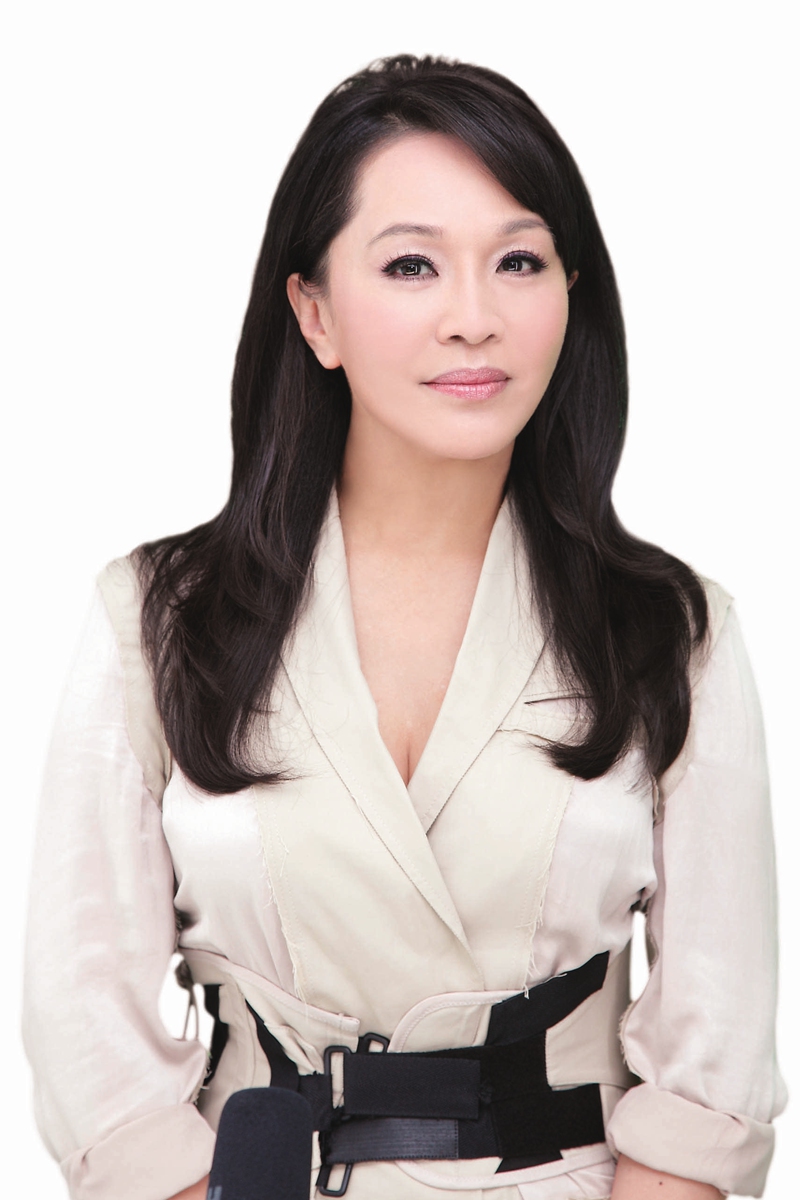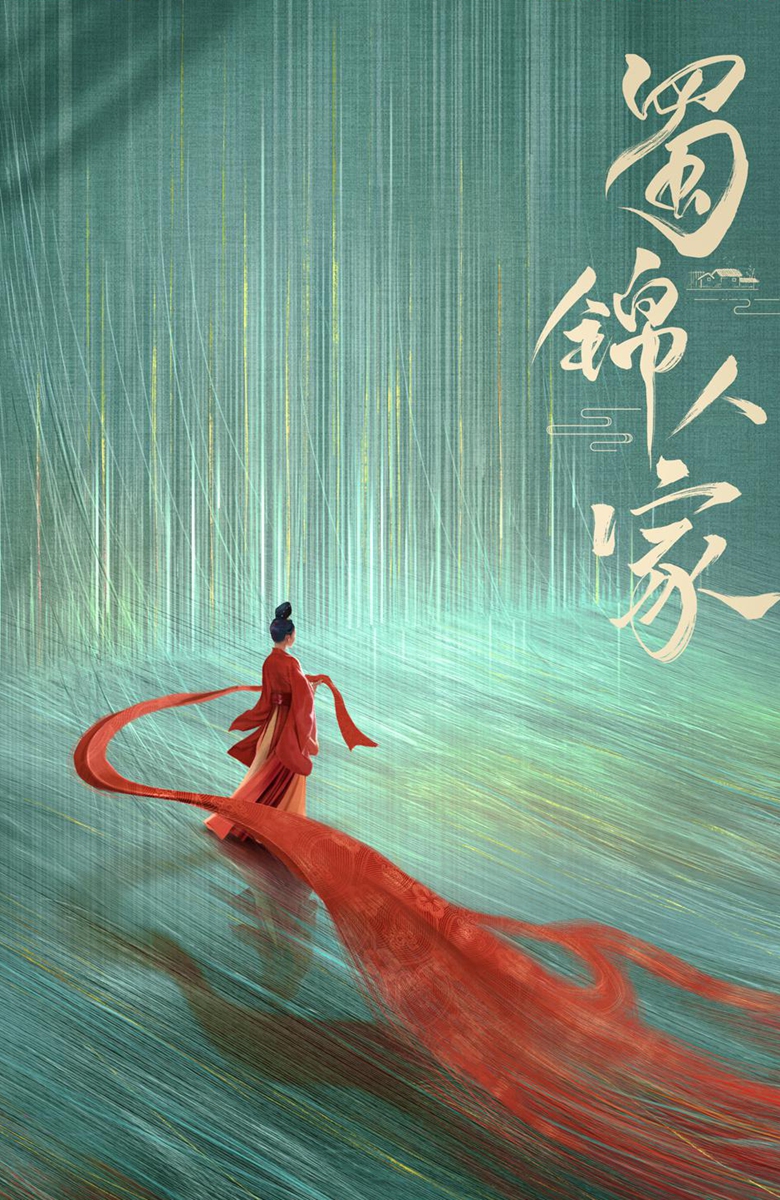
Costumes designed by Huang Wei and her team Photo: Courtesy of Huang Wei
A Chinese historical TV series that is slated to premiere during the summer vacation has aroused interest with its marketing that showcased the elaborately crafted costumes representing one of the four renowned traditional Chinese weaving techniques.
The period costume drama
Shu Brocade Family, which was adapted from a novel of the same title and produced by Youku, revolves around the Shu brocade and tells the story of Ji Yingying, a heroine from the Tang Dynasty (618-907) who was committed to preserving a secret dyeing technique and bringing Shu brocade to new heights in the Silk Road trade.
As a national intangible cultural heritage, Shu embroidery art added cultural and aesthetic significance to the show with its delicate costume designs.
Huang Wei, costume design and styling director for the drama, told the Global Times during a recent exclusive interview that she and her team have endeavored to replicate Shu brocade faithfully by integrating tradition and innovation.
"While preserving the authentic Tang Dynasty patterns of Shu brocade, we also explore and experiment with various weaving techniques. We aim to revitalize the traditional embroidery craftsmanship by combining the power of modern machinery and technology," said Huang.
To incorporate the cultural significance and artistic features of Shu brocade into costume design, Huang and her team visited the Chengdu Shu Brocade and Embroidery Museum in Southwest China's Sichuan Province and observed live demonstrations by intangible cultural heritage artisans.
Aiming at authentically re-creating the fashion of the late Tang Dynasty, they extensively researched historical documents, studying the history, craftsmanship, and cultural significance of Shu brocade.
"By embroidering floral patterns onto the brocade, we managed to present the rich colors, luster, exquisite designs, and texture of Shu brocade, bringing out its unique charm and elegance," Huang noted.
"It is truly an awe-inspiring experience to see these centuries-old crafts being brought to life. I remember an old craftsman saying that the brocade weaving machine requires two artisans to operate together, each with at least 10 years of experience to produce quality brocade. Even the two skilled artisans we saw could only weave about 6 centimeters of Shu brocade in one day. It finally made sense why people often say, 'an inch of brocade is worth an inch of gold,'" she said.

Costume designer Huang Wei Photo: Courtesy of Huang Wei
Unique appeal
With a history dating back more than 2,000 years, Shu brocade originated from a type of silk fabrics produced in Sichuan back in the Warring States Period (475BC-221BC). It is a type of colorful brocade with Han ethnic features and local style, according to Chengdu Administration of Cultural Heritage.
Shu brocade is known as one of the four great brocades of China together with Yun brocade and Song brocade in East China's Jiangsu Province, as well as Zhuang brocade in South China's Guangxi Zhuang Autonomous Region. In 2006, the weaving technique of Shu brocade was included in the national intangible cultural heritage list.
The unique appeal of Shu brocade is found in its plain, twill, and satin weaving techniques, which contribute to its distinctively clear and defined appearance.
The ancient embroidery art made the headlines during the Chengdu World University Games held in the summer of 2023 as the medal ribbon of the Games features a dazzling array of patterns including Chengdu city flower hibiscus, cloud and the sun bird inspired by Chengdu's Jinsha archaeological site.
Crafted with the techniques of Shu brocade, the ribbon takes on vivid interplay of colors when reflected to natural light.
Chinese traditional costumes play a significant role on the international stage. The costumes undoubtedly serve as a significant cultural window that facilitates important cultural exchanges and mutual understanding between China and other countries, Huang noted.
Costume design is not just an expression of aesthetic taste and lifestyle; it is also a carrier of ethnic, historical, and cultural heritage.
Taking Chinese traditional attire. The unique styles, fabric materials, patterns, and colors from different dynasties showcase the charm of Chinese historical and cultural heritage. Garments like
hanfu (the traditional clothing of the Han ethnic group), Tang suits, and
qipao (a close-fitting woman's dress with high neck and slit skirt) embody rich cultural connotations and aesthetic values through their styles, color schemes, and patterns, she said.
In the TV series, many scenes are used to portray the entire process of Shu brocade production, from reeling silk and dyeing to weaving brocade and making garments. Each aspect, including style, color coordination, pattern design, and craftsmanship, reflects a profound respect for history and reverence for traditional culture, allowing viewers to appreciate the beauty of the millennia-old Chinese traditions.

Promotional material for drama Shu Brocade Family Photo: Courtesy of Douban
Shining anewHaving taken part in costumes design in the production of over 80 TV series and films since 2011, Huang said the biggest challenge for her is to integrate traditional elements with modern aesthetics in a harmonious balance.
"Taking the
Shu Brocade Family as an example. It is essential to conduct thorough research into the traditional craftsmanship and cultural significance of Shu brocade. Meanwhile, we spend a lot of time integrating these elements into modern aesthetics. This approach ensures that audiences can experience the charm of traditional culture while appreciating designs that align with contemporary aesthetic standards," Huang said.
When it comes to revitalizing the traditional techniques and costumes, she said, "We strive to blend traditional attire with modern design and production techniques, creating garments that embody both traditional charm and meet contemporary aesthetic demands. For instance, we can incorporate modern color combinations, technological materials, and innovative tailoring methods to enhance and upgrade traditional attire, making it more appealing to modern sensibilities."
Looking ahead, Huang said she hoped to foster greater understanding and appreciation for Chinese traditional culture among more people.
"We hope to delve deep into the essence of traditional attire, allowing China's rich cultural heritage in traditional costumes to shine anew in modern film and television productions. By integrating more intangible cultural heritage techniques with contemporary aesthetic concepts and craftsmanship methods, we aim to create costume designs that are both traditional and stylish, allowing audiences to appreciate the unique charm and profound cultural heritage of Chinese tradition," she noted.






